
Alice Cooper is an American rock singer and songwriter whose career spans sixty years. With a raspy voice and a stage show that features numerous props and stage illusions, including pyrotechnics, guillotines, electric chairs, fake blood, reptiles, baby dolls, and dueling swords, Cooper is considered by many music journalists and peers to be "The Godfather of Shock Rock". He has drawn equally from horror films, vaudeville, and garage rock to pioneer a macabre and theatrical brand of rock designed to shock audiences.

Destroyer is the fourth studio album by American hard rock band Kiss, released on March 15, 1976, by Casablanca Records in the US. It was the third successive Kiss album to reach the top 40 in the US, as well as the first to chart in Germany and New Zealand. The album was certified gold by the RIAA on April 22, 1976, and platinum on November 11 of the same year, the first Kiss album to achieve platinum. The album marked a departure from the raw sound of the band's first three albums.
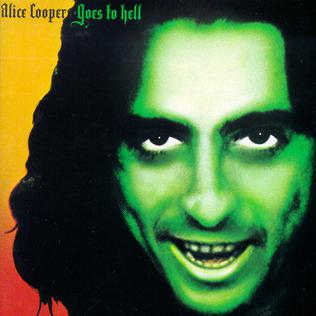
Alice Cooper Goes to Hell is the second solo studio album by American rock musician Alice Cooper, released in 1976. A continuation of Welcome to My Nightmare as it continues the story of Steven, the concept album was written by Cooper with guitar player Dick Wagner and producer Bob Ezrin.

Muscle of Love is the seventh and final studio album by American rock band Alice Cooper. It was released in late 1973, the band played its last concert a few months later.
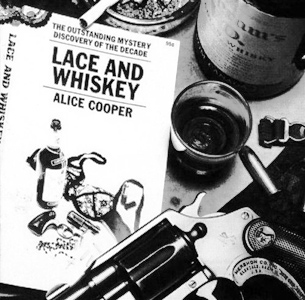
Lace and Whiskey is the third solo and tenth overall studio album by American rock singer Alice Cooper, released on April 29, 1977, by Warner Bros. Records.

Love It to Death is the third studio album by American rock band Alice Cooper, released on March 9, 1971. It was the band's first commercially successful album and the first album that consolidated the band's aggressive hard-rocking sound, instead of the psychedelic and experimental rock style of their first two albums. The album's best-known track, "I'm Eighteen", was released as a single to test the band's commercial viability before the album was recorded.
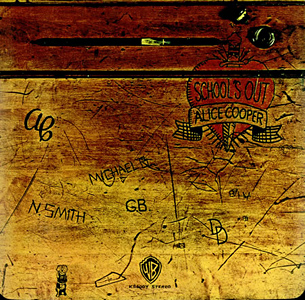
School's Out is the fifth studio album by American rock band Alice Cooper, released in June 1972. Following on from the success of Killer, School's Out reached No. 2 on the US Billboard 200 chart and No. 1 on the Canadian RPM 100 Top Albums chart, holding the top position for four weeks. The single "School's Out" reached No. 7 on the Billboard Hot 100, No. 3 on the Canadian RPM Top Singles Chart and went to No. 1 in the UK Singles Chart.
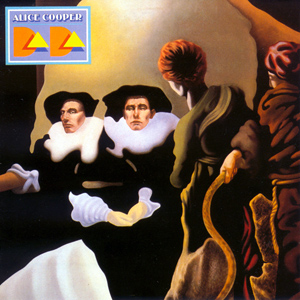
DaDa is the eighth solo studio album by American rock singer Alice Cooper, released on September 28, 1983, by Warner Bros. Records. DaDa would be Cooper's final studio album until his sober re-emergence in 1986 with the album Constrictor.

Killer is the fourth studio album by American rock band Alice Cooper, released in November 1971 by Warner Bros. Records. The album peaked at No. 21 on the Billboard 200 album chart, and the two singles "Under My Wheels" and "Be My Lover" made the Billboard Hot 100 chart.

Richard Allen Wagner was an American rock guitarist, songwriter and author best known for his work with Alice Cooper, Lou Reed, and Kiss. He also fronted his own Michigan-based bands, the Frost and the Bossmen.
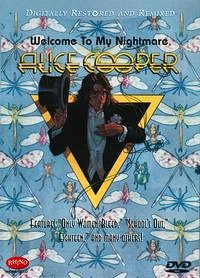
Welcome to My Nightmare is a 1976 concert film of Alice Cooper's show of the same name. It was produced, directed and choreographed by David Winters. The film accompanied the album, the stage show by the same name and the TV special Alice Cooper: The Nightmare, the first ever rock music video album, starring Cooper and Vincent Price in person. Though it failed at the box office, it later became a midnight movie favorite and a cult classic.

"I'm Eighteen" is a song by rock band Alice Cooper, first released as a single in November 1970 backed with "Is It My Body". It was the band's first top-forty success—peaking at number 21—and convinced Warner Bros. that Alice Cooper had the commercial potential to release an album. The song and its B-side feature on the band's first major-label album Love It to Death (1971).

"Only Women Bleed" is a song by American rock singer Alice Cooper, released on his debut solo studio album Welcome to My Nightmare (1975). It was written by Cooper and Dick Wagner and was the second single from the album to be released.

The Strange Case of Alice Cooper is a live concert video released in September 1979, of Alice Cooper performing with his backing band The Ultra Latex Band. The concert was filmed on April 9, 1979 during Cooper's 'Madhouse Rock' Tour in San Diego, California, at the San Diego Sports Arena, in support of the album From The Inside.

Alice Cooper: The Nightmare was a conceptual television special showcasing the music of the Welcome to My Nightmare album by Alice Cooper. It originally broadcast in North America on April 25, 1975, by ABC.

Stephen John Hunter is an American guitarist, primarily a session player. He has worked with Lou Reed and Alice Cooper, acquiring the moniker "The Deacon". Hunter first played with Mitch Ryder's Detroit, beginning a long association with record producer Bob Ezrin who has said Steve Hunter has contributed so much to rock music in general that he truly deserves the designation of "Guitar Hero". Steve Hunter has played some of the greatest riffs in rock history - the first solo in Aerosmith's "Train Kept A Rollin'", the acoustic intro on Peter Gabriel's "Solsbury Hill" and he wrote the intro interlude on Lou Reed's live version of "Sweet Jane" on Reed's first gold record.

Welcome 2 My Nightmare is the nineteenth solo album by American rock musician Alice Cooper, released in September 2011. Peaking at No. 22 in the Billboard 200 it is Cooper's highest-charting album in the US since 1989's Trash. The album is a sequel to his 1975 album Welcome to My Nightmare.
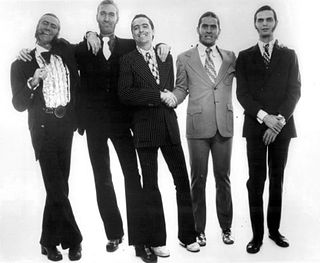
Alice Cooper, also known as the Alice Cooper Group or the Alice Cooper Band, was an American rock band formed in Phoenix, Arizona, in 1968. The band consisted of lead singer Vincent Furnier, Glen Buxton, Michael Bruce, Dennis Dunaway, and Neal Smith (drums). The band was notorious for their elaborate, theatrical shock rock stage shows.

Super Duper Alice Cooper is a 2014 Canadian biographical documentary film about shock rock musician Alice Cooper, written and directed by Sam Dunn, Scot McFadyen and Reginald Harkema.



















